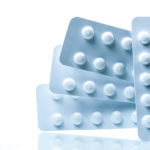PHILADELPHIA—Existing urate-lowering therapies are generally safe and effective and should be used aggressively to reach target treatment goals, according to N. Lawrence Edwards, MD, who gave an update on therapeutic options for hyperuricemia here at the 2009 ACR/ARHP Annual Scientific Meeting. The symposium also focused on the relationship of hyperuricemia to both the metabolic syndrome and cardiovascular disease and how understanding the biologic activity of uric acid should guide therapy.
Dr. Edwards—professor, program director, and vice chair of the department of medicine at the University of Florida in Gainesville—said that most physicians do not prescribe a high enough dose of urate-lowering therapy because of concerns about toxicity and hypersensitivity reactions.
“Most recent studies have found no association between risk and dose,” he said. “Raise the dose to whatever it takes to get to target.” Most physicians, he said, do an inadequate job of managing gout because the condition is not treated aggressively enough.
Urate-Lowering Therapies
Therapies used for urate lowering will have no effect on pain but are necessary for renal function and to reduce gout attacks, Dr. Edwards said. Indications for urate lowering include multiple gout flares each year, advanced gouty arthritis, presence of tophi, gout with chronic kidney disease, recurring renal stones, and daily urinary urate excretion of 1,000 mg or more.
When the urate level is lower than 6.0 mg/dL, the patient’s flares can be eliminated, the tophi resolve, and quality of life improves. This level “improves renal function if you can get the patient off NSAIDs [nonsteroidal antiinflammatory drugs],” he said.
Current therapies for urate lowering include:
- Allopurinol: Most physicians prescribe a 300-mg allopurinol dose or lower, and only 3% of physicians prescribe a dose higher than 300 mg, even though the U.S. Food and Drug Administration (FDA) has approved doses up to 800 mg. A 300-mg or lower dose has been found ineffective in many cases, even though some published guidelines recommend the 300-mg dose. “If you adhere to these guidelines, you will be massively undertreating your patients,” Dr. Edwards said.
- Febuxostat: A new selective xanthine oxidase inhibitor and nonpurine analog, febuxostat is metabolized in the liver, orally administered, rapidly absorbed, and highly protein bound. A phase III trial, the CONFIRMS trial, found that more patients reached the target of lower than 6 mg/dL at six months with an 80-mg dose. The 40-mg dose outperformed the 80-mg dose in renally impaired patients, and 44% of patients reached a 5-mg/dL target with the higher dose, he said.1
- Pegloticase: Not yet approved by the FDA, pegloticase is a purified recombinant porcine urate oxidase that catalyzes the conversion of uric acid to allantoin, a more soluble and readily excretable form. Patients in the clinical trials were the “bad cases,” with longstanding disease, numerous comorbidities, inability to reduce serum urate below 6 mg/dL, reduced quality of life, chronic swollen and tender joints, and frequent flares; 75% had tophi. With injections given every two weeks, there was a “remarkable decline in baseline, resolution of tophi, and impressive lowering of uric acid,” Dr. Edwards said.
Pain Management
Gout management should also include pain control. The most effective pain reduction therapies include:
- NSAIDs and glucocorticoids.
- Colchicine: The Acute Gout Flare Receiving Colchicine Evaluation (AGREE) trial considered the efficacy of high-dose versus low-dose colchicine versus placebo and found less toxicity with the low dose.2
- Newer interleukin-1 inhibitors: anakinra, rilonacept, and canakinumab. All have been found effective for significant reduction in gout pain and chronic pain.
Cardiovascular Disease Link
Hyon Choi, MD, professor of medicine at Boston University School of Medicine, said that hyperuricemia is strongly associated with the metabolic syndrome. The metabolic syndrome is a cluster of symptoms that can include increased blood pressure; elevated insulin levels; high triglycerides, low HDL cholesterol, and high LDL cholesterol; and excess body fat around the waist.

